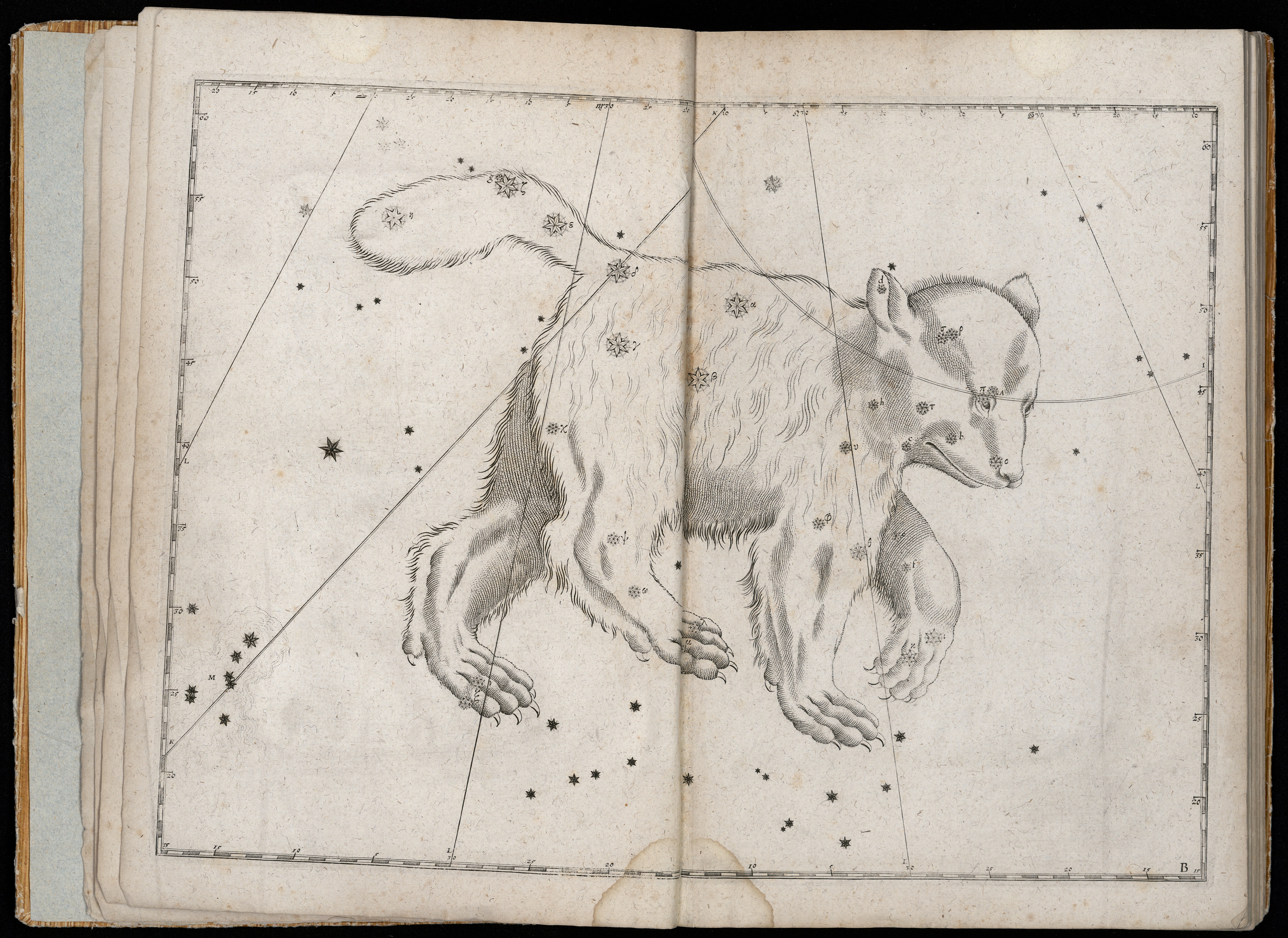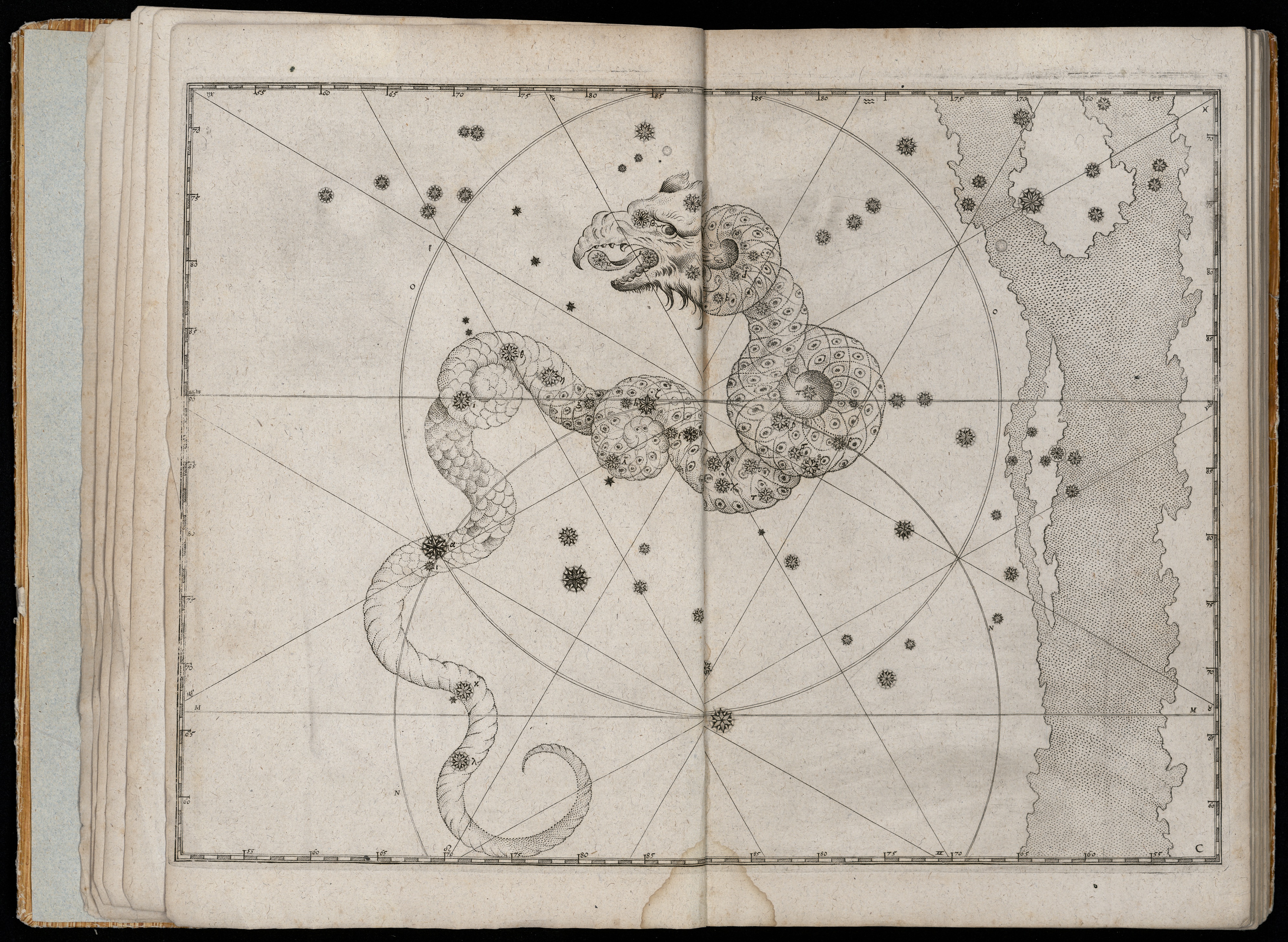Bode, Uranographia
Image attribution
Source notes
This magnificent atlas fused artistic beauty and scientific precision. Bode, director of the Observatory of the Berlin Academy of Sciences, produced the last of the four major celestial atlases in which artful depictions of constellation figures appear alongside the most up-to-date scientific data.
20 large copperplate engravings plot more than 17,000 stars, far more than any previous atlas. Bode included new stars for the southern hemisphere, along with constellations recently invented by Hevelius and Lacaille.
Bode depicted more than 100 constellations, compared with 88 officially recognized today. Some which appeared in this atlas for the first time, but are not officially recognized today, include the Cat, the Printing Press, the Montgolfier Balloon, and the Electric Generator.
Bode also included 2,500 cloudy patches, or “nebula,” cataloged by William Herschel.
Bode included two planisphere plates. They are not southern and northern hemispheres; each one has Polaris at the top and the south pole at the bottom. Each one is centered upon an equinox point (where the ecliptic or path of the Sun and the celestial equator intersect). The March equinox point was in Aries in antiquity; by Bode’s time, due to the precession of the equinoxes, it had shifted to Pisces. The September equinox point was in Libra in antiquity; by Bode’s time it had shifted to Virgo. Bode titled the plates as the Aries and Libra planispheres. Click the links below for more information on the planisphere plates.
Earlier, in 1782, Bode published a small-format atlas based on a Paris edition of Flamsteed.
The four great celestial atlases of Bayer, Hevelius, Flamsteed and Bode were each distinctive in their artistic style as well in their scientific importance. After Bode, this fusion of art and science in celestial atlases ceased, as scientific atlases no longer held room to include artistic constellation figures.
Key to the plates / sample constellation prominent on each plate:
- Plate I: Aries hemisphere.
- Plate II: Libri hemisphere.
- Plate III: Draco.
- Plate IV: Andromeda.
- Plate V: Auriga.
- Plate VI: Ursa Major.
- Plate VII: Bootes.
- Plate VIII: Cygnus.
- Plate IX: Ophiuchus.
- Plate X: Pegasus.
- Plate XI: Aries.
- Plate XII: Orion.
- Plate XIII: Leo.
- Plate XIV: Virgo.
- Plate XV: Sagittarius.
- Plate XVI: Aquarius.
- Plate XVII: Cetus.
- Plate XVIII: Canis Major.
- Plate XIX: Hydra.
The title page makes an additional plate for a total of 20.










